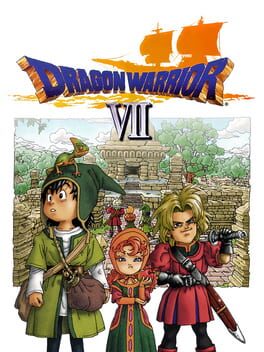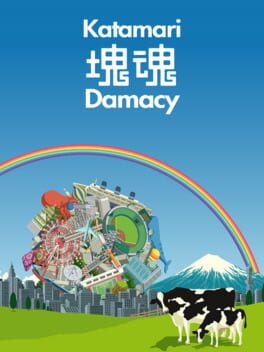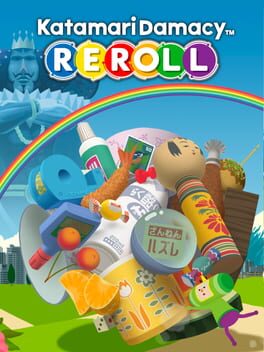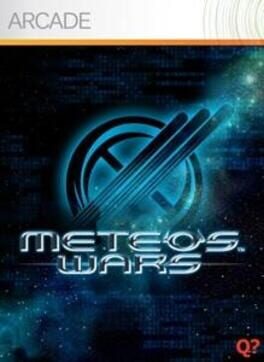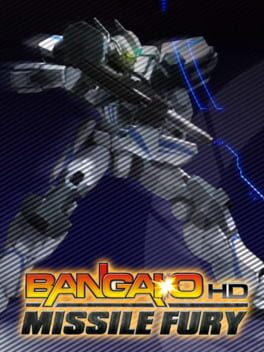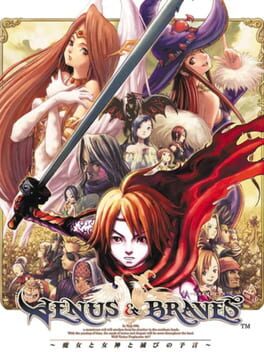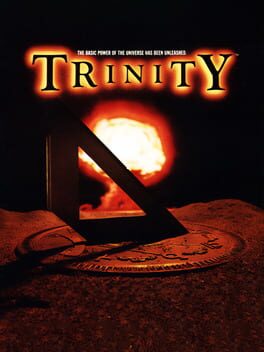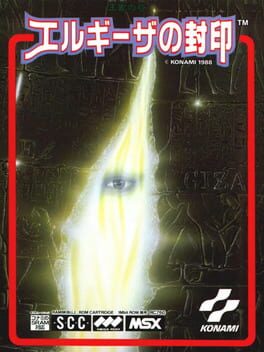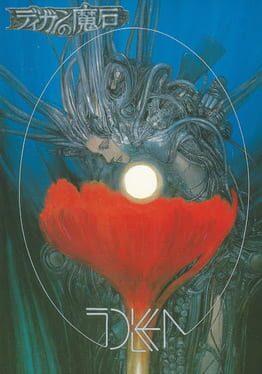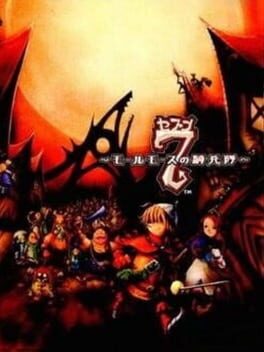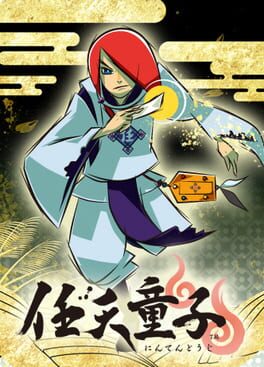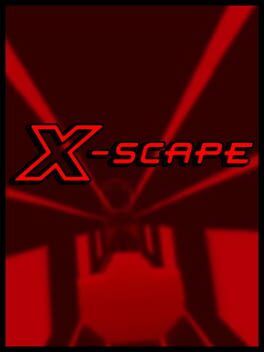maddux
6 reviews liked by maddux
God Hand
2006
Before there was Oblivion with guns, there was Resident Evil 4 without guns. More so than with respect to even its emphasis on crowd control, dynamic difficulty scaling or abundance of contextual carpal tunnel generators, God Hand’s arguably most reminiscent of its spiritual cousin in terms of how forward-thinking it is.
An action game likes convenience. To be able to jump in and fight what you want, when you want with as little fluff as possible’s part of why DMC’s Bloody Palace (or equivalents) became a genre mainstay, why Bayonetta 3’s revamped chapter select system is probably the single most underappreciated feature of 2022 and why the not-infrequent complaint about Nioh having a level select menu is so mystifying. Play enough games from when this family tree was still in its relative infancy and you’ll likely realise how easy it is to take such features for granted, which is why it's so cool that God Hand had something like the Fighting Ring so early on in the genre’s history.
A practice area coupled with all sorts of bespoke combat encounters you can tackle and/or fail any number of times, totally free of consequence, would be a natural fit for any action game, but it’s especially great for God Hand because of how its equipment system works. There’s not just a litany of attacks at your disposal, each with their own distinct properties and niches, but you can also equip any of them in any order and assign them to any button. It’s an unprecedented degree of customisation that might’ve otherwise been overwhelming without an area like this, and which I’m not sure’s been matched before or since. The likes of The Wonderful 101, God of War 3 and DMC5 might let me switch from one weapon to any other in any order, but not even they let me build a moveset out of pimp slaps if I feel like it, purely because I can.
The draw of experimentation that comes with this is hampered a bit by certain rough patches – for example, multi-hit attacks occasionally feel disincentivised in a way that doesn’t seem intentional because of how frequently enemies block and counterattack as the difficulty level increases (especially on Hard where you’re permanently at the highest), while low profile moves which dodge enemies’ high attacks for some reason don’t avoid jumping grabs – but what helps keep the combat malleable despite these is the counterhit system. Interrupt an enemy or boss’ attack with one of your own and they’ll varyingly flinch, be stunned, get juggled or launched, even if none of those properties work on them normally. It creates an engaging sense of back-and-forth and ensures you’re never completely strapped for options no matter how suffocating the situation you find yourself in or which moves you've equipped, especially when taken in tandem with being able to cancel any of Gene’s attacks at any point with one of three different dodges (which, provided your thumbs can remain intact, is also particularly helpful for circumventing the aforementioned issues with multihit attacks).
On that point, God Hand’s handling of defence is something more games could probably stand to learn from. The Great Sensei is a sink or swim moment in this respect and, in my view, the embodiment of what makes it shine, stringing together high attacks, vertical attacks and crowd control in blistering succession that demands you have an iron grip on each of Gene’s dodges and what they’re for like no boss before or after him. He would still be infamously difficult because of all this in a vacuum, but I think part of why he’s such a challenge also stems from how many other games with real-time combat systems treat their (often singular) dodge as a one-size-fits-all invincibility bubble and how tough it can be to break the conditioning that that sort of standardisation instils. Lost Judgment is another 3D beat-‘em-up which plays excellently, but despite being 15 years God Hand’s junior on platforms multitudes more powerful, it can’t help but feel comparatively primitive whenever Yagami “evades” a sweep kick by ducking his head. In contrast, God Hand’s more nuanced combination of side/backward dodges and bobbing & weaving reminded me loosely of Soulcalibur, which on top of its counterhit system makes one wonder how much other action games might benefit from leaning into their common ground with fighting games.
Not all of God Hand’s boss fights or enemies utilise its mechanics equally well, the final boss in particular running the risk of jettisoning the player’s goodwill into the bin, but some scattershot ups and downs are to be expected when your game is so bonkers at every turn. It speaks to how entertaining its stages manage to be, both conceptually and in design, that you end the game with no further mechanics than what you start with and it never once feels stale. There’s an inherent excitement that comes with cramming so many clowns, demons, cowboys, Venetian canals, floating pyramids and other seemingly disparate ideas that you don’t know what to expect next; while some might be surprised at the fact that he considers Resident Evil 4 to be the opposite, it’ll likely shock nobody that Shinji Mikami feels that God Hand is the game with the most amount of himself in it. What results is no doubt chaotic, but more than worth looking past the imperfections of for experiencing what’s essentially his and a bunch of other loveable goofballs’ collective personality transcribed onto a disc, which also happens to be perhaps the only game that feels like an interactive version of an action film’s fight choreography.
If you happen to still have a PS2 lying around, I can attest that the ~80 gamerbux that used copies of this bad boy go for are worth it. You may not be you know who, but you’ll feel like it by the end.
An action game likes convenience. To be able to jump in and fight what you want, when you want with as little fluff as possible’s part of why DMC’s Bloody Palace (or equivalents) became a genre mainstay, why Bayonetta 3’s revamped chapter select system is probably the single most underappreciated feature of 2022 and why the not-infrequent complaint about Nioh having a level select menu is so mystifying. Play enough games from when this family tree was still in its relative infancy and you’ll likely realise how easy it is to take such features for granted, which is why it's so cool that God Hand had something like the Fighting Ring so early on in the genre’s history.
A practice area coupled with all sorts of bespoke combat encounters you can tackle and/or fail any number of times, totally free of consequence, would be a natural fit for any action game, but it’s especially great for God Hand because of how its equipment system works. There’s not just a litany of attacks at your disposal, each with their own distinct properties and niches, but you can also equip any of them in any order and assign them to any button. It’s an unprecedented degree of customisation that might’ve otherwise been overwhelming without an area like this, and which I’m not sure’s been matched before or since. The likes of The Wonderful 101, God of War 3 and DMC5 might let me switch from one weapon to any other in any order, but not even they let me build a moveset out of pimp slaps if I feel like it, purely because I can.
The draw of experimentation that comes with this is hampered a bit by certain rough patches – for example, multi-hit attacks occasionally feel disincentivised in a way that doesn’t seem intentional because of how frequently enemies block and counterattack as the difficulty level increases (especially on Hard where you’re permanently at the highest), while low profile moves which dodge enemies’ high attacks for some reason don’t avoid jumping grabs – but what helps keep the combat malleable despite these is the counterhit system. Interrupt an enemy or boss’ attack with one of your own and they’ll varyingly flinch, be stunned, get juggled or launched, even if none of those properties work on them normally. It creates an engaging sense of back-and-forth and ensures you’re never completely strapped for options no matter how suffocating the situation you find yourself in or which moves you've equipped, especially when taken in tandem with being able to cancel any of Gene’s attacks at any point with one of three different dodges (which, provided your thumbs can remain intact, is also particularly helpful for circumventing the aforementioned issues with multihit attacks).
On that point, God Hand’s handling of defence is something more games could probably stand to learn from. The Great Sensei is a sink or swim moment in this respect and, in my view, the embodiment of what makes it shine, stringing together high attacks, vertical attacks and crowd control in blistering succession that demands you have an iron grip on each of Gene’s dodges and what they’re for like no boss before or after him. He would still be infamously difficult because of all this in a vacuum, but I think part of why he’s such a challenge also stems from how many other games with real-time combat systems treat their (often singular) dodge as a one-size-fits-all invincibility bubble and how tough it can be to break the conditioning that that sort of standardisation instils. Lost Judgment is another 3D beat-‘em-up which plays excellently, but despite being 15 years God Hand’s junior on platforms multitudes more powerful, it can’t help but feel comparatively primitive whenever Yagami “evades” a sweep kick by ducking his head. In contrast, God Hand’s more nuanced combination of side/backward dodges and bobbing & weaving reminded me loosely of Soulcalibur, which on top of its counterhit system makes one wonder how much other action games might benefit from leaning into their common ground with fighting games.
Not all of God Hand’s boss fights or enemies utilise its mechanics equally well, the final boss in particular running the risk of jettisoning the player’s goodwill into the bin, but some scattershot ups and downs are to be expected when your game is so bonkers at every turn. It speaks to how entertaining its stages manage to be, both conceptually and in design, that you end the game with no further mechanics than what you start with and it never once feels stale. There’s an inherent excitement that comes with cramming so many clowns, demons, cowboys, Venetian canals, floating pyramids and other seemingly disparate ideas that you don’t know what to expect next; while some might be surprised at the fact that he considers Resident Evil 4 to be the opposite, it’ll likely shock nobody that Shinji Mikami feels that God Hand is the game with the most amount of himself in it. What results is no doubt chaotic, but more than worth looking past the imperfections of for experiencing what’s essentially his and a bunch of other loveable goofballs’ collective personality transcribed onto a disc, which also happens to be perhaps the only game that feels like an interactive version of an action film’s fight choreography.
If you happen to still have a PS2 lying around, I can attest that the ~80 gamerbux that used copies of this bad boy go for are worth it. You may not be you know who, but you’ll feel like it by the end.
Dragon Warrior VII
2000
We Love Katamari
2005
I’m not sure this is a common enough occurrence to call it a trend within game development, but I’ve noticed that a few games I love are reluctant sequels that likely wouldn’t have been made if the creator had a say in the matter. Kojima wanted Metal Gear Solid 2 to be the last game, yet he was obliged by Konami to make a third, thus creating what’s considered the greatest game of all time by many. We Love Katamari is another example of this, and the game itself is completely on the nose about its obliged creation.
That’s not an insult either, It totally uses this tone to amplify the game. I think it’s an incredible test of creativity to make a sequel to a game that really shouldn’t have one. How do you even make another Katamari game that doesn’t feel like more of the exact same. The whole game is essentially one verb: roll.
Katamari Damacy uses this verb to craft one of the most enjoyable games of all time. There’s a lot more underneath the foundation of this singular action. The first Katamari game slowly builds up a tension around our motivation as players. You wanna roll up cars, buildings, all the big stuff! For so long you struggle to even craft Katamaris that are large enough to engulf a single person. The payoff of this game is the eventual rolling up of the whole planet. You start off rolling up coins, batteries, ants, (an insane variety of assets), and soon you are picking up entire islands, rainbows, volcanos. All of this to the joy of one of the greatest soundtracks in video game history. It’s even surrounded by a strangely pure narrative and humor that’s localized to perfection. These games are hilarious.
So you have a game where you just roll up stuff level by level, each time getting bigger, with an occasional specific objective (such as roll up the biggest bear, roll up fish etc). How do you further enhance that formula?
We Love Katamari tackles this challenge in a possibly obvious way, but its simplicity is incredibly genuine and smart. Without Keita Takahashi, a sequel could’ve been as basic as “roll up even bigger stuff, dude”. Maybe a simpler control scheme to expand the audience to people who couldn’t grasp the bizarre dual analog stick control scheme of the first, maybe add something resembling more obvious combat or platform-like scenarios. Health bars! Jump buttons! Instead we have a sequel that doesn’t try to outdo itself in scope alone.
We Love Katamari does have levels where you just get big and roll up big things, but it hammers down on the idea of goal based motivation. There’s almost a more strategic and puzzle like element to this game. You won’t always be aimlessly rolling up whatever you see to get as big as possible. You’ll have levels - like the campfire mission - where you have to roll a katamari on fire around and keep it burning as long as possible. Roll up snow to craft the perfect snowman. Really simple ideas that go beyond the basics of the first game. There’s still a meditative and zen feeling to the experience, but it feels a bit more engaging, and honestly less frustrating at times since bumping into things is less punishing. Everything else about its presentation is on par if not a little better than the first game as well. The meta narrative of catering to katamari fans is on the nose, but it’s not trying to be subtle. It’s hilarious, but it gets away with it because it does pull off being a fantastic sequel. I think the first two Katamari games are genuinely some of the funniest games of all time, if not the funniest.
Some people weren’t as hot on the more specific goals of the gameplay, but I think it shows off why this weird style of gameplay is so much fun.
This game aptly inspired a lot of “katamari-likes” (or whatever the proper term for these would be). Mobile games where you play as a thing and you absorb things to get bigger and bigger and bigger. It takes that satisfying element of Katamari Damacy and simplifies it down to the immediate payoff. There’s not really a buildup to it. They’re “just so satisfying” to play. These mobile games are harmless, but they miss the point of what makes games like Katamari Damacy satisfying. Not that they’re trying to be anything more than what they are, but Katamari Damacy being grouped with games of the like is a disservice to what Katamari Damacy is. I mean, the eternal mode where you get to roll stuff up aimlessly is indeed fun and satisfying, but the build up and payoff to get to that point makes it even better. There is an intended frustration to the process. You get hit or bump into things and your katamari loses items and shrinks, you get stuck in a tricky area, you have to put in a lot of effort to get up simple obstacles, and sometimes the King of Cosmos will condescendingly criticize the size of your Katamari at the end of a level. He still takes the katamari and lets you continue, but now the game is about pleasing your space dad too. The game is full of interesting problem solving and motivation, even if the actual gameplay is repetitive and simple.
We Love Katamari takes all of this into account and shows off the fine details of what makes these games great. It would be easy to go bigger and whackier, but instead we get a Katamari game that has more technical design behind its levels. It’s the same type of game at heart, but it’s full of little changes to presentation and gameplay motivation to makes it feel different from its predecessor. It’s fun, endearing, creative, beautiful, funny, and genuine. This is the last Katamari game made by the original creator. I believe he took this concept and maxed it out to its full potential.
They tried to franchise it out even more without him, but nothing ever stuck like the original two games. They’re isolated and amazing pieces of art and entertainment. Genuinely some of the best games of all time. We never needed a ton of sequels, though I’m really glad that We Love Katamari turned out the way it did.
Tears of the Kingdom is radically and unintentionally about intrinsic motivation. All the building blocks are placed right in front of you, but you'll have to assemble them yourself. This is nothing new for pure sandbox games, but TOTK isn't supposed to be a pure sandbox game! In its best moments, it harnesses this: even mundane challenges are an opportunity to spark creativity. In its worst, it resents this, and will fight your agency tooth-and-nail.
Most of the time, the game lands in an awkward middle: not outright controlling you per se, but holding the guiding reins with shocking determination. Say you're on a floating island with a crystal you need to deliver to a nearby shrine. Almost certainly the game will place a wing and fan nearby, reducing the whole situation to a classic Zelda "nuzzle" where the solution is just handed to you directly. I understand tutorialization, but the game refuses to trust the player even after hours and hours and hours of this.
This also undermines any sort of efficiency-driven play, since the optimal solutions (that aren't obtuse speedrun-style tech) are simple and/or universal cheesy tactics (e.g. object + ascend + recall). There also seems to be some sort of aggressive speed cap that gives strong diminishing returns to multiple fans/rockets/etc. which hurts the parts management aspect.
But, with all this said, there's nothing stopping me from simply ignoring the game and coming up with my own wacky idea that's fun and interesting! What if I tried to launch the crystal directly with rockets? What if I dropped something to the surface from the shrine, brought the crystal, and recalled it back up? What if I put it on a really, really, really long stick?
Once I accidentally lifted up a large floating platform too high to grab with my Ultrahand. So I took out all my weapons, glued them in a straight line, and managed to reach up high enough to fuse it to the platform and yank the whole thing back down!
These are some of the most joyous experiences I've had in a game. I can't praise the building system enough (despite some minor control issues) in how deep, intuitive, and polished it is. Much of my time was spent messing around in some random location, seeing what I could build that used the items and landscape around me. It's the only true sequel to Super Metroid that Nintendo has ever made: the world is a kaleidoscope of problems to be both invented and solved.
But what's bizarre to me is how so much of the game either refuses to acknowledge this or even actively resists it! One of the greatest experiences I had with this game was making the climb up to the Water Temple on my own, without any prompting. Finding strange and inventive ways to hop between islands as I climb higher and higher in solitude, listening to the quiet ambience and seeing the imposing structure above creep closer and closer, then finally breaking in to hear the Water Temple's song play. This was by far the most powerful experiential moment I had in both open-world Zeldas, and in retrospect mirrors much of the strengths of Fumito Ueda's work.
And then, I was greeted with a loud "DA-DING" error message from the central console of the temple. So I dropped down, completed a menial fetch quest so Sidon would come up to the island chain, then returned to the console. "DA-DING." I went back, talked to him on a different island so the game would flip the proper flag, then returned again and was finally allowed to progress. It's baffling how the same game can have mechanics that encourage such freedom and a structure that so constricts it.
Mostly though, as with my first example, the game settles for mere apathy. Shrines vary from stiflingly simple lock-and-key tests of specific parts to open-ended challenges that you could feasibly solve without knowing the intended solution. (Sadly, the former are far more common than the latter.) The Fire Temple's skatepark design was my overwhelming favorite, and the Lightning Temple shows glimmers of greatness, but the Water and Wind Temple feel like Divine Beasts, and on the whole it's hard to not be disappointed in the missed potential here.
The Depths has parts lying around everywhere and treacherous terrain to use them on, but is homogenous and bloated. Sky Islands offer small shrine-esque challenges that can be fun, but fall far short of the potential illustrated by the tutorial area. Most of the side quests I tried were fetch quest adjacent, but there might be some really good ones out there! Which speaks to a larger point: there's too much content that's too much like BOTW that's spread across too large an area.
Combat mirrors the rest of the game, and its problems go back to BOTW. The sheer amount of options offered by fusing is breathtaking, and the breadth of interactions in BOTW's chemistry system has been made far more accessible. But the balance is all wrong! You can feel the potential during the combat shrines, where stripping your items away forces a more improvisational style. But the games it's (unconsciously) looking towards have key differences. Halo's two weapon limit prevents you from hoarding ammo in advance, whereas in TOTK (and BOTW for that matter) you will collect random resources without thinking. Traditional roguelikes are stingy with items to incentivize crafty use of each one, but BOTW and TOTK shower you with powerful consumables and fusion materials. Arkane's immersive sims also suffer from these problems to some degree, but in those games the level design is as much your foe as the enemies themselves, while level design is perhaps the single greatest failing of TOTK. All of the above games aspire to differentiate their tools, and TOTK has a lot of ways to produce interesting and unique effects, but the most common and powerful fusion materials are simple damage increases, which scale into the late game far better than the creative ones!
Despite all I've said above, I wouldn't quite call the combat "bad" per se. The swordplay is somewhat entertaining, throwing weapons is a great risk-reward mechanic, and having to scavenge around mid-fight adds a lot. But the most fun thing to do is to play with your food: try weird effects and interactions (of which the Bokoblins are fantastically suited for!) instead of playing efficiently all the time. Freeze things and blow them off cliffs! Bounce enemies around with a mushroom spear! Start Bokoblin-Zonai infighting!
For being so brilliantly realized yet simultaneously sloppily crafted, TOTK earns the title of most bizarre game I've ever played. It almost has a romhack quality to it: making visionary changes in some areas while uncritically accepting so much of its ill-fitting foundation. I had many moments of joy while playing it, but all throughout, the game looked on with a disinterested gaze. No score.
Most of the time, the game lands in an awkward middle: not outright controlling you per se, but holding the guiding reins with shocking determination. Say you're on a floating island with a crystal you need to deliver to a nearby shrine. Almost certainly the game will place a wing and fan nearby, reducing the whole situation to a classic Zelda "nuzzle" where the solution is just handed to you directly. I understand tutorialization, but the game refuses to trust the player even after hours and hours and hours of this.
This also undermines any sort of efficiency-driven play, since the optimal solutions (that aren't obtuse speedrun-style tech) are simple and/or universal cheesy tactics (e.g. object + ascend + recall). There also seems to be some sort of aggressive speed cap that gives strong diminishing returns to multiple fans/rockets/etc. which hurts the parts management aspect.
But, with all this said, there's nothing stopping me from simply ignoring the game and coming up with my own wacky idea that's fun and interesting! What if I tried to launch the crystal directly with rockets? What if I dropped something to the surface from the shrine, brought the crystal, and recalled it back up? What if I put it on a really, really, really long stick?
Once I accidentally lifted up a large floating platform too high to grab with my Ultrahand. So I took out all my weapons, glued them in a straight line, and managed to reach up high enough to fuse it to the platform and yank the whole thing back down!
These are some of the most joyous experiences I've had in a game. I can't praise the building system enough (despite some minor control issues) in how deep, intuitive, and polished it is. Much of my time was spent messing around in some random location, seeing what I could build that used the items and landscape around me. It's the only true sequel to Super Metroid that Nintendo has ever made: the world is a kaleidoscope of problems to be both invented and solved.
But what's bizarre to me is how so much of the game either refuses to acknowledge this or even actively resists it! One of the greatest experiences I had with this game was making the climb up to the Water Temple on my own, without any prompting. Finding strange and inventive ways to hop between islands as I climb higher and higher in solitude, listening to the quiet ambience and seeing the imposing structure above creep closer and closer, then finally breaking in to hear the Water Temple's song play. This was by far the most powerful experiential moment I had in both open-world Zeldas, and in retrospect mirrors much of the strengths of Fumito Ueda's work.
And then, I was greeted with a loud "DA-DING" error message from the central console of the temple. So I dropped down, completed a menial fetch quest so Sidon would come up to the island chain, then returned to the console. "DA-DING." I went back, talked to him on a different island so the game would flip the proper flag, then returned again and was finally allowed to progress. It's baffling how the same game can have mechanics that encourage such freedom and a structure that so constricts it.
Mostly though, as with my first example, the game settles for mere apathy. Shrines vary from stiflingly simple lock-and-key tests of specific parts to open-ended challenges that you could feasibly solve without knowing the intended solution. (Sadly, the former are far more common than the latter.) The Fire Temple's skatepark design was my overwhelming favorite, and the Lightning Temple shows glimmers of greatness, but the Water and Wind Temple feel like Divine Beasts, and on the whole it's hard to not be disappointed in the missed potential here.
The Depths has parts lying around everywhere and treacherous terrain to use them on, but is homogenous and bloated. Sky Islands offer small shrine-esque challenges that can be fun, but fall far short of the potential illustrated by the tutorial area. Most of the side quests I tried were fetch quest adjacent, but there might be some really good ones out there! Which speaks to a larger point: there's too much content that's too much like BOTW that's spread across too large an area.
Combat mirrors the rest of the game, and its problems go back to BOTW. The sheer amount of options offered by fusing is breathtaking, and the breadth of interactions in BOTW's chemistry system has been made far more accessible. But the balance is all wrong! You can feel the potential during the combat shrines, where stripping your items away forces a more improvisational style. But the games it's (unconsciously) looking towards have key differences. Halo's two weapon limit prevents you from hoarding ammo in advance, whereas in TOTK (and BOTW for that matter) you will collect random resources without thinking. Traditional roguelikes are stingy with items to incentivize crafty use of each one, but BOTW and TOTK shower you with powerful consumables and fusion materials. Arkane's immersive sims also suffer from these problems to some degree, but in those games the level design is as much your foe as the enemies themselves, while level design is perhaps the single greatest failing of TOTK. All of the above games aspire to differentiate their tools, and TOTK has a lot of ways to produce interesting and unique effects, but the most common and powerful fusion materials are simple damage increases, which scale into the late game far better than the creative ones!
Despite all I've said above, I wouldn't quite call the combat "bad" per se. The swordplay is somewhat entertaining, throwing weapons is a great risk-reward mechanic, and having to scavenge around mid-fight adds a lot. But the most fun thing to do is to play with your food: try weird effects and interactions (of which the Bokoblins are fantastically suited for!) instead of playing efficiently all the time. Freeze things and blow them off cliffs! Bounce enemies around with a mushroom spear! Start Bokoblin-Zonai infighting!
For being so brilliantly realized yet simultaneously sloppily crafted, TOTK earns the title of most bizarre game I've ever played. It almost has a romhack quality to it: making visionary changes in some areas while uncritically accepting so much of its ill-fitting foundation. I had many moments of joy while playing it, but all throughout, the game looked on with a disinterested gaze. No score.
Katamari Damacy
2004
A brilliant, shining diamond of a gameplay idea at its core, a fresh and lovely visual style, and an OST that was an all-time classic ten seconds into the first track. This game felt like magic when it came out. It's every bit as cool today.
As good as it was and is, it always felt like it was missing a little tiny something, to me. I would say that the 'level design', if you will, is a weak point. The world seems arranged more by the artists than the designers, and that's fun to explore but leads to lots of dead spots and awkward area transitions. It also ends up kind of shoehorning you into one way to play most levels. The endgame is little lacking, too.
But whatever. These things would immediately be addressed in the sequel as a matter of course, and don't mean a whole lot in the grand scheme of things. This was a generation-defining lightning strike of simple creativity. It rules!
As good as it was and is, it always felt like it was missing a little tiny something, to me. I would say that the 'level design', if you will, is a weak point. The world seems arranged more by the artists than the designers, and that's fun to explore but leads to lots of dead spots and awkward area transitions. It also ends up kind of shoehorning you into one way to play most levels. The endgame is little lacking, too.
But whatever. These things would immediately be addressed in the sequel as a matter of course, and don't mean a whole lot in the grand scheme of things. This was a generation-defining lightning strike of simple creativity. It rules!
An absolute-least-effort-possible style remaster. Really just a straight port. Plenty they could have done, but they punted on doing anything, ANYTHING at all worthwhile to it. The only real changes are a couple boneheaded visual goofs and weirdly cutting most of the US localization. No interesting trophies. Couldn't even bother with autosave. Dumb.
Still -technically- one of the best games ever, though.
Still -technically- one of the best games ever, though.

